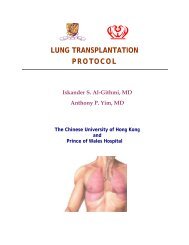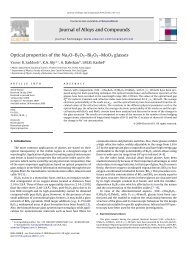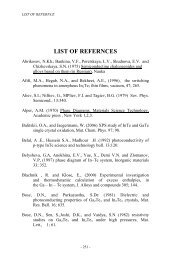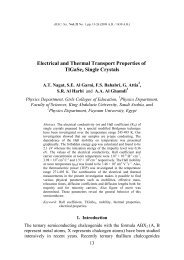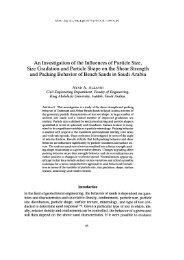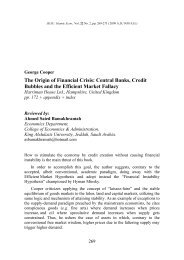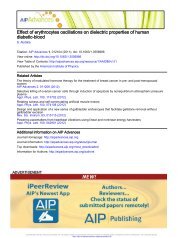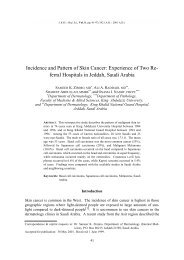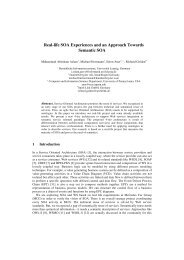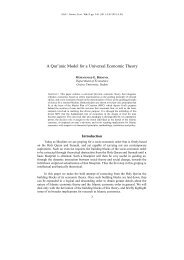Fundamental Organic Chemistry
Fundamental Organic Chemistry
Fundamental Organic Chemistry
You also want an ePaper? Increase the reach of your titles
YUMPU automatically turns print PDFs into web optimized ePapers that Google loves.
2- Thin-Layer Chromatography(TLC)<br />
Thin-layer chromatography is a variation of column chromatography.<br />
Instead of a column, a strip of glass or plastic is coated on one side with a thin<br />
layer of alumina or silica gel.<br />
In a TLC analysis, about 10 µL of a solution of the substance to be tested is<br />
placed (“spotted”) in a single spot near one end of the plate, using a micro<br />
capillary. The plate is “developed” by placing it in a jar with a small amount of<br />
solvent. Shows a TLC plate in a developing jar. The solvent rises up the plate by<br />
capillary action, carrying the components of the sample with it. Different<br />
compounds in the sample are carried different distances up the plate because of<br />
variations in their adsorption on the adsorbent coating. If several components are<br />
present in a sample, a column of spots is seen on the developed plate, with the<br />
more polar compounds toward the bottom of the plate and the less polar<br />
compounds toward the top.<br />
As an analytical tool, TLC has a number of advantages: it is simple, quick,<br />
inexpensive, and requires only small amounts of sample. Tlc is generally used as<br />
a qualitative analytical technique, such as checking the purity of a compound or<br />
determining the number of components in a mixture. We can use TLC to follow<br />
the course of a reaction by checking the disappearance of starting material.<br />
25



